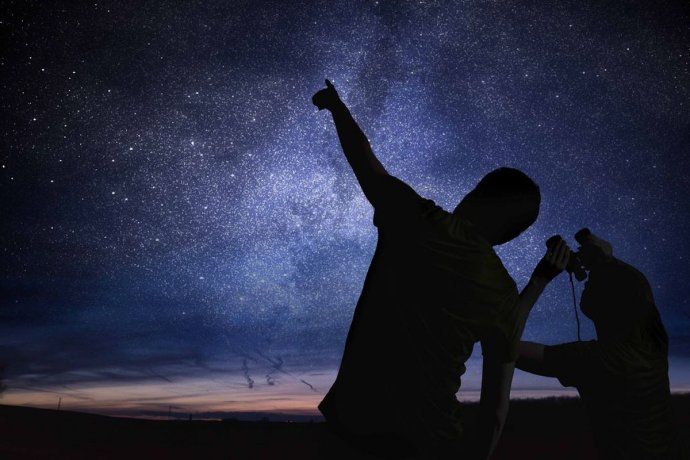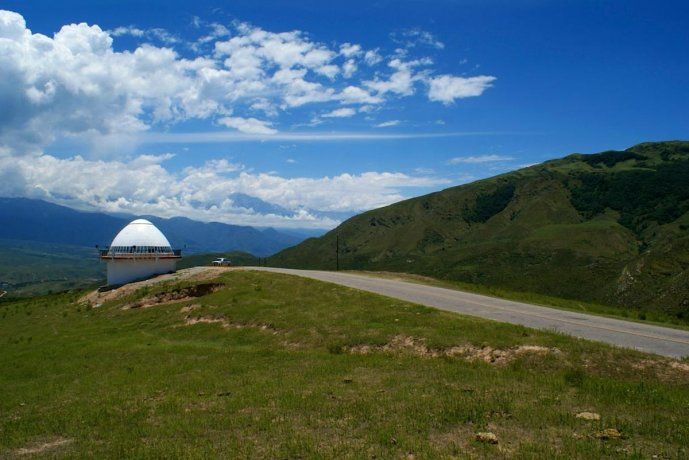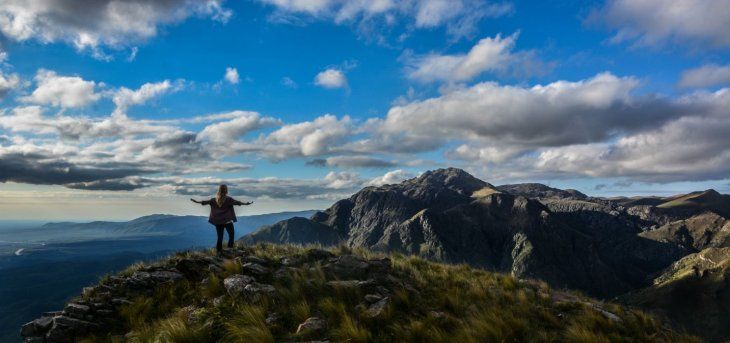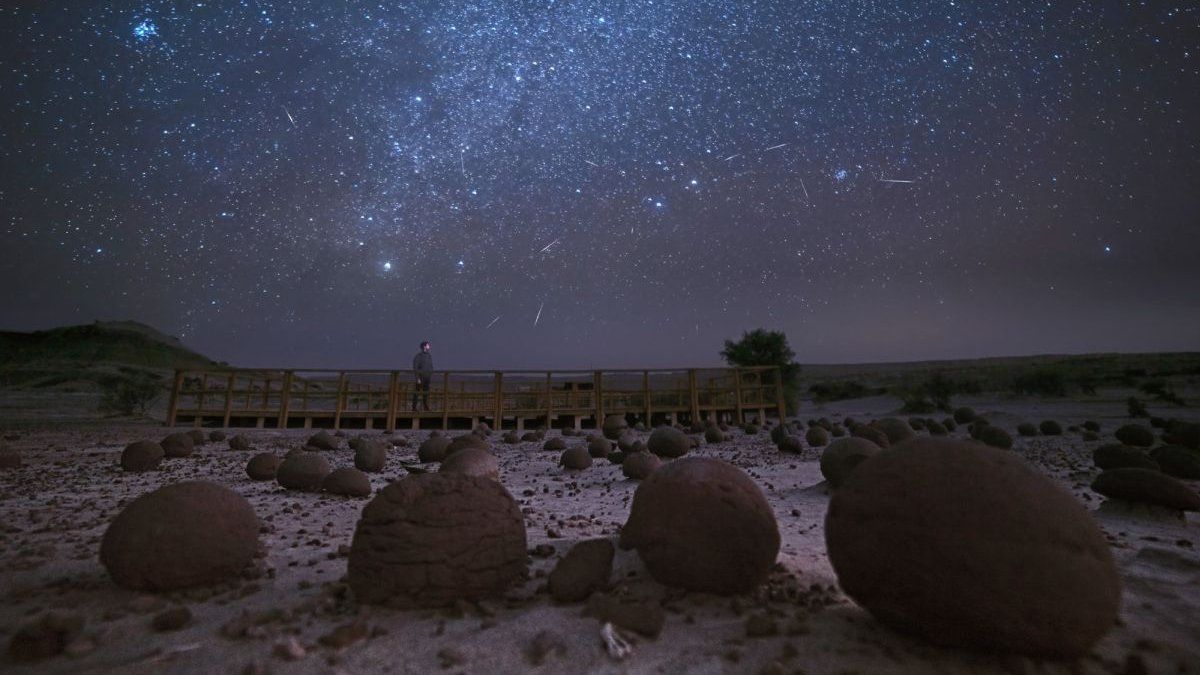When to go: monthly schedules. The activity is carried out from sunset on days of crescent or new moon to favor observation.
How to get: by plane, bus or car to Puerto Iguazú (232 km) or to Posadas (168 km). From both cities there are excursions, buses or transfers to Aristóbulo del Valle. The entrance to the park is 15 km from this town by RN 14 and RP 220.
missions.jpg
Guarani Sky, Misiones.
The Nature Route
Astrotourism in San Luis, San Luis
Villa de Merlo: the Mirador del Cielo is an observatory with an open sky telescope in Golden Hill that offers activities to the public. The planetarium also allows observation through reflecting telescopes, recognition of planets, stars, meteorites and satellites. naked eye.
Another option is to participate in the night outings to Bad Steps or to Sun lookout organized by providers specialized in astrotourism.
La Punta Astronomical Park (PALP): very close to San Luis capital, this place invites you to explore the Planetary (a simulator of the night sky); the Solar of Gazes (to know the observation instruments) and the Buenaventura Suarez Observatory (an invitation to operate a remote telescope at a distance).
When to go: all year with prior reservation.
How to get: by plane, bus or car to San Luis capital. To La Punta it is 20 km; to Villa de Merlo it is 200 km. From there you can go to the different places where the night outings take place.
san juan.jpg

Villa de Merlo, San Luis.
The Andes
Janaxpacha Huasi Municipal Planetarium, Aconquija, Catamarca
Janaxpacha Huasi (“house of heaven” in Quechua) is a planetarium at 2,000 meters above sea level with Activities for all ages and specialized guides who tell you about the characteristics and curiosities of the sun, the moon and the planets.
When to go: all year.
How to get: from San Fernando del Valle de Catamarca, by car, bus or combi to Aconquija (150 km) by RP 1.
catamarca.jpg

Janaxpacha Huasi Municipal Planetarium, Aconquija, Catamarca.
House of Catamarca
Sky Route, San Juan
Saint John is the National Capital of Astronomical Tourism. Its Ruta del Cielo runs through unmissable destinations to discover the secrets of the universe. These are some of the destinations you can visit:
El Leoncito National Park (Barreal): the imposing observatories CESCO and CASLEO they settled in the El Leoncito National Park for the quality and clarity of its skies. Both offer guided tours and special activities inside and outside the observatories.
Félix de Aguilar Observatory and Reinaldo Carestia Astronomical Museum (Chimbas): you can visit the observatory with prior reservation. In addition, the museum has four rooms of exhibition where they are seen from telescopes to calculation and meteorological instruments.
Astronomical Viewpoints: they are distributed in different parts of the province: Slope of Huaco (on RN 150), on the way to Hill Seven Colorsat the foot of Colorado Hill and in the Alkazar Hill, among others. Located in the middle of nature, they are ideal places to observe the sky.
Blue Saws (Zonda): you can join a circuit of trekking either bike and combine astronomy with adventure, legends and the history of the original peoples, the huarpes.
Field of Stars (Albardón): enjoy a walk outdoorlocal gastronomy, wine tasting and solar observation.
Ischigualasto Provincial Park (Fertile Valley): if the date of your trip allows it, do not miss the excursion Under the moon full in the incredible Ischigualasto Provincial Park.
When to go: all year. The observatories with prior reservation.
How to get: by own car, plane or bus to San Juan capital. From there to Albardón (12 km), Zonda (21 km), Calingasta (174 km), Barreal (209 km) or San Agustín del Valle Fértil (251 km).
stars.jpg

Sky Route, San Juan.
The Nature Route
Cerro Uritorco – Pavón Post, Chapel of Mount, Córdoba
Cerro Uritorco is famous for its stories of ufo and his powerful energy. But there are other sites strongly linked to astrotourism.
The shelter Curassow Post It is the first accommodation in Argentina with a sky “certified” by the International Starlight Foundation, dependent on the Institute of Astrophysics of the Canary Islands. It is reached by van or with a walk of 3 to 4 hours.
If you are a big fan of astronomy, you can also get to know the astronomical Observatory of the city of Córdoba with its Planetarium and its Museum, the Plaza Cielo y Tierra Scientific Interpretation Center or, about 50 km from the capital, the Bosque Alegre Astrophysical Station (check the days and hours of visits at https://oac.unc.edu.ar/divulgacion/visitas/publico-general/)
When to go: the best time is between the months of March and October.
How to get: Córdoba capital has good national and international air connectivity and from there by land transport to Capilla del Monte, 98 km along the Camino del Cuadrado (scenic route) and RN 38.
cordoba.jpg

The Nature Route
Source: Ambito
David William is a talented author who has made a name for himself in the world of writing. He is a professional author who writes on a wide range of topics, from general interest to opinion news. David is currently working as a writer at 24 hours worlds where he brings his unique perspective and in-depth research to his articles, making them both informative and engaging.




